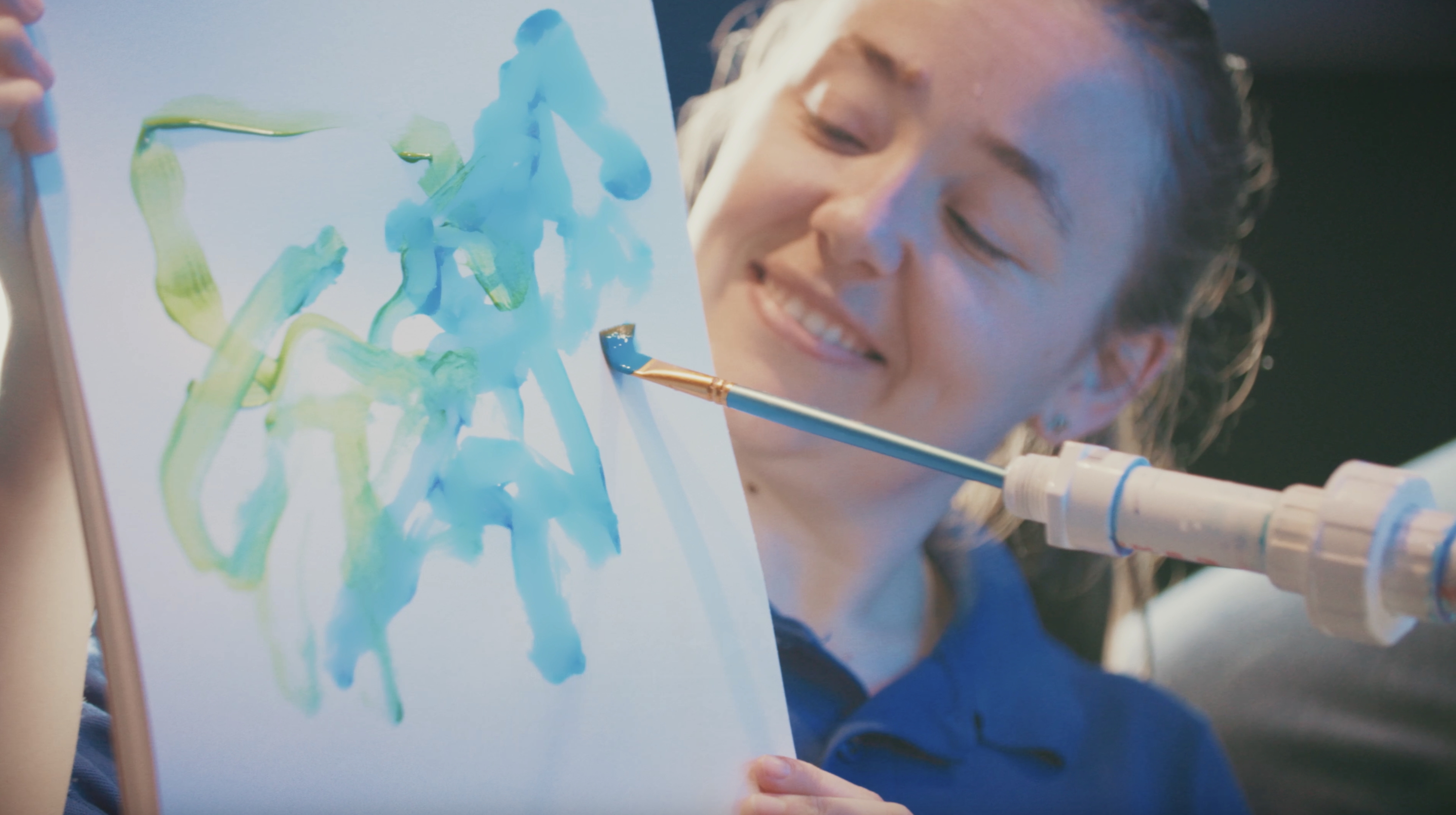Tulane students engineer unique aquarium art experience
October 17, 2025 9:00 AM | Molly McCrory mmccrory@tulane.edu
Jinsy Hardison, a chemical engineering student at Tulane University, has been visiting the Audubon Aquarium since she was a kid. So when she had the opportunity to work with the aquarium for a service-learning project, she was thrilled.
Hardison and her classmate, Eric Jackson, teamed up to design a device that transfers the stingrays’ motions into works of abstract aquatic art.
“They’re very playful creatures,” said Hardison. “They kind of play with their food, which is a fun element of their personality that we could use when we were making this.”
This unusual combination of art, engineering and marine life began in a service-learning class run by their professor, Katie Russell, who has previously collaborated with the aquarium for such projects.

The project began when aquarium staff asked Hardison and Jackson to design and build something that would engage stingrays and aquarium guests and would be safe for the stingrays to interact with on a regular basis.
“We settled on the idea of creating a device that not only allows guests to interact with the animals in the touch pool but also have a personalized experience and take home a souvenir,” said Hardison.
What they came up with seems simple – a bright green ball on one end of a stick, and a paintbrush on the other. When the ball moves on one end, the paintbrush moves on the other. Before they could bring the project to life, however, they faced a series of engineering challenges.
“We had to find a certain material that would withstand user interface with kids and adults of all ages, as well as the saltwater environment that it would be in and around,” said Jackson.
Hardison and Jackson settled on high-density polyethylene plastic, or HDPE, commonly used in aquariums because it doesn’t degrade with exposure to saltwater. It is also sturdy enough to withstand the wear and tear of the cownose rays, white-spotted bamboo sharks and other animals in the touch pool. Starting with a plywood model, they adjusted the design through several iterations until they perfected it.
Once the design was done, they used a waterjet cutter in the Scot Ackerman MakerSpace on Tulane’s uptown campus to construct it.
“We took advantage of our peer resources, people who know how to use the equipment better than we do,” said Hardison. “And our professor, Dr. Russell, was amazing. She gave us some of the technical knowledge that we may not have had.”
Then, they chose a repurposed green dog toy, stuffed with mackerel, capelin and other treats.
The stingrays, with names such as Princess, Pumpkin and Jingle Bells, glide over as soon as they see the telltale green ball enter the pool. It is a sign that playtime, which is also snack time, is near.
As the stingrays slurp up food from the ball, they nudge, roll and bump against it. The movement translates to the brush, spreading paint across a canvas visitors hold as they stand by the side of the pool.
“Our service-learning class is a way for us to incorporate the stuff we do in lab into an actual project,” said Jackson. “We’re actually creating a final product for the people that we’re working with.”
Once the interactive exhibit is staffed, visitors will be able to take their own stingray work of art home with them.
For Hardison, the project represents more than just a class assignment.
“I think service learning is one of the best ways that a student can learn,” said Hardison, “because it not only helps you better your technical skills, but it also incorporates your personal passions and the love for the New Orleans community that we all share.”
